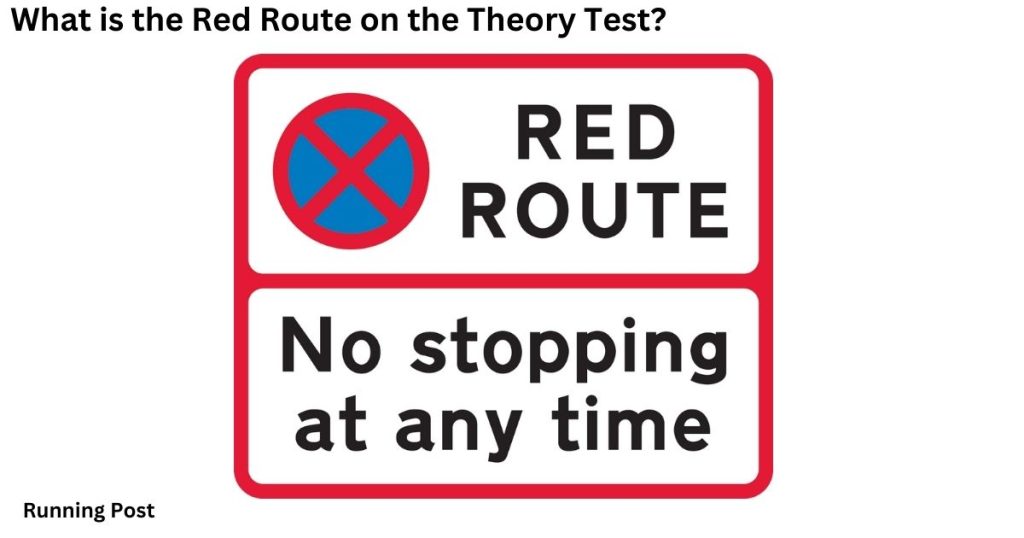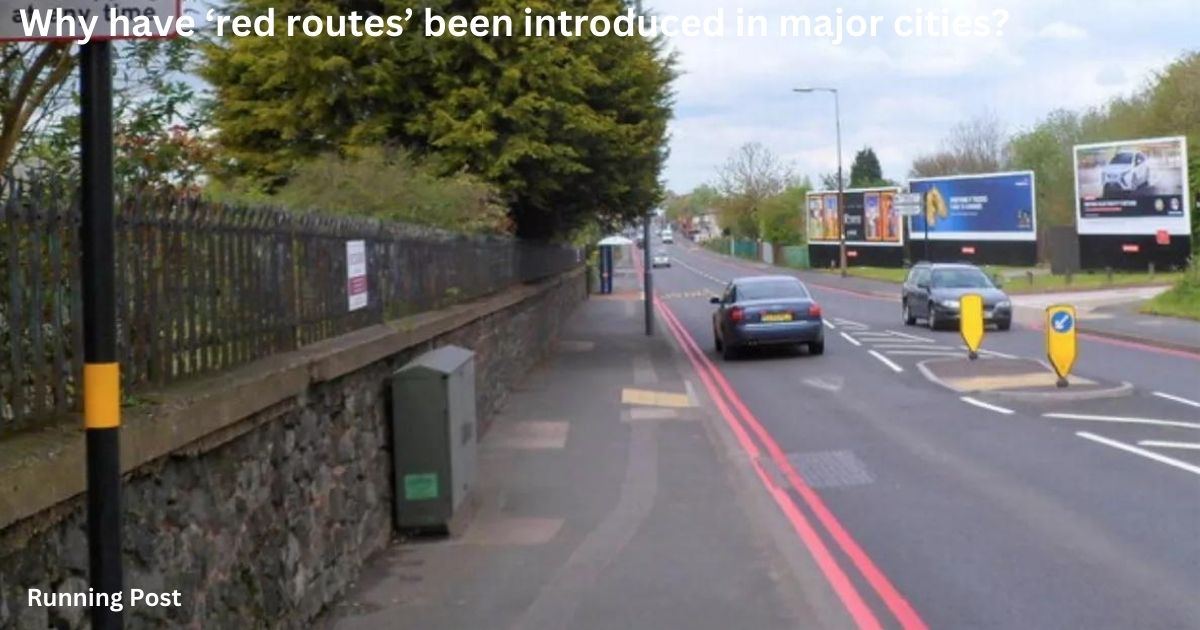| A: To help the traffic flow | B: To provide better parking | C: To allow lorries to load more freely | D: To raise the speed limits |
Understand The Why have ‘red routes’ been introduced in major cities?
Introduction
Overview of Red Routes
Red routes are a distinctive feature of urban road management designed to keep traffic flowing smoothly in congested areas. These routes are marked with red lines and signs that impose strict parking and stopping restrictions. They are strategically placed in high-traffic areas where efficient road use is crucial. The purpose of these routes is to minimize congestion and ensure that essential traffic movements are not impeded by parked vehicles or other obstructions. Red routes play a vital role in enhancing urban mobility, improving safety, and facilitating emergency response times.
What is a Red Route Used For?
Purpose of Red Routes
Red routes are primarily introduced to manage traffic flow in busy urban areas. By enforcing restrictions on parking and stopping, these routes prevent blockages that can lead to severe congestion. They are designed to keep the main roads clear, allowing for smoother traffic movement and reducing the chances of traffic jams.
Another key purpose of red routes is to enhance road safety. By limiting parking and stopping, the routes reduce the risk of accidents caused by vehicles suddenly pulling out into traffic or creating obstacles for other road users.
Managing Traffic Flow
One of the core functions of red routes is to manage traffic flow effectively. In cities where road space is at a premium, ensuring that main roads are clear of parked cars and other obstructions is crucial for maintaining a steady flow of traffic. This is especially important during peak hours when traffic volume is high. By keeping these roads clear, red routes help prevent bottlenecks and ensure that traffic can move more efficiently.
Reducing Congestion
Red routes help significantly in reducing congestion in urban areas. When parking and stopping are restricted on these routes, there are fewer vehicles on the road competing for space, which can ease overall traffic congestion. This is particularly beneficial in areas prone to gridlock, where even a small obstruction can lead to widespread traffic delays.
Enhancing Road Safety
Enhanced road safety is another critical advantage of red routes. By reducing the number of vehicles parked or stopping along these roads, the risk of accidents is minimized. Drivers have a clearer view of the road and surrounding traffic, which helps in making safer driving decisions. Furthermore, emergency vehicles can travel more freely without being impeded by parked cars, improving response times in critical situations.
Examples of Red Routes in Major Cities
Red routes are used in various major cities around the world to address traffic management issues. For instance, London has an extensive network of red routes that help keep traffic moving efficiently in the capital’s busy areas. New York City also employs red routes in certain locations to manage the high volume of traffic and ensure that key routes remain clear. These examples illustrate how red routes can be tailored to meet the specific needs of different urban environments, providing a solution to the common problem of traffic congestion.
What is the Red Route on the Theory Test?

Definition and Importance
On the driving theory test, the red route refers to roads marked with red lines where specific parking and stopping restrictions are in place. Understanding these routes is crucial for drivers as they must know where they are permitted to park or stop to avoid fines and penalties. The red route designation helps test-takers familiarize themselves with these regulations, ensuring they can navigate urban environments effectively.
Understanding Red Routes for Drivers
For drivers, recognizing and understanding red routes is essential for safe and legal driving. These routes are designated to prevent obstruction and ensure that traffic flows smoothly. Familiarity with red routes helps drivers avoid inadvertently stopping or parking in restricted areas, thereby reducing the risk of fines and contributing to overall road safety.
Relevance in Driving Theory Exams
Red routes are a relevant topic in driving theory exams because they test a driver’s knowledge of traffic regulations and road signs. Questions about red routes typically involve identifying where parking or stopping is prohibited and understanding the implications of violating these rules. Preparing for such questions ensures that drivers are well-equipped to handle real-world driving situations where red routes are present.
Typical Questions About Red Routes
Typical theory test questions about red routes might include scenarios where a driver encounters a red route and must determine whether they can park or stop. For example, a question might ask whether it is permissible to stop on a red route during specific conditions or if there are exceptions to the restrictions. These questions assess a driver’s ability to apply their knowledge of red routes to practical driving situations.
You Also Like It:
How do smart motorways prevent traffic bunching?
When may you use hazard warning lights while you’re driving?
Why Do We Need to Identify Red Routes?
Importance of Red Route Identification
Identifying red routes is crucial for maintaining compliance with traffic regulations. Drivers need to recognize these routes to avoid parking or stopping in restricted areas, which could lead to fines or penalties. Accurate identification helps in adhering to the rules designed to keep roads clear and traffic flowing smoothly.
Compliance with Traffic Regulations
Compliance with traffic regulations is a significant reason for identifying red routes. These routes are marked to enforce specific rules, and recognizing them helps drivers follow the law. Adhering to these regulations is important for avoiding legal issues and contributing to the efficient functioning of the road network.
Avoiding Fines and Penalties
Avoiding fines and penalties is another important reason for identifying red routes. Vehicles parked or stopped in prohibited areas on red routes are subject to fines. By being aware of where these routes are located and understanding the restrictions, drivers can avoid costly penalties and ensure they are not infringing on traffic rules.
Impact on Drivers and Pedestrians
Improved Navigation
Improved navigation is a benefit of identifying red routes. Drivers who are aware of these routes can plan their journeys more effectively, avoiding areas where stopping or parking is prohibited. This leads to smoother trips and less frustration, as drivers can navigate the city more efficiently without running into unexpected restrictions.
Safety Considerations
Safety considerations are paramount when it comes to red routes. By keeping these routes clear of obstructions, the risk of accidents is reduced, benefiting both drivers and pedestrians. Clear roads provide better visibility and more predictable traffic patterns, contributing to a safer environment for everyone on the road.
How Red Routes Help?
Benefits of Red Routes
Improved Traffic Flow and Reduced Congestion
Red routes offer several benefits, including improved traffic flow and reduced congestion. By limiting parking and stopping on key roads, these routes help ensure that traffic moves smoothly without interruptions. This is particularly beneficial in busy urban areas where maintaining a steady flow is essential for preventing traffic jams.
Enhanced Safety for All Road Users
Enhanced safety is another significant benefit of red routes. With fewer obstructions on the road, the risk of accidents is lowered. Drivers have a clearer view of the road and can make safer decisions, while pedestrians are less likely to encounter sudden hazards. Overall, red routes contribute to a safer driving environment.
Long-Term Effects
Impact on Urban Transportation
The long-term impact of red routes on urban transportation is notable. By improving traffic flow and reducing congestion, red routes contribute to a more efficient transportation network. This can lead to better quality of life for residents, as travel times are reduced and traffic-related issues are minimized.
Case Studies Showing Improvement
Case studies from cities that have implemented red routes demonstrate their effectiveness in improving traffic management. For instance, after introducing red routes, cities like London have seen significant reductions in congestion and improvements in road safety. These examples highlight the positive impact red routes can have on urban transportation systems.
Conclusion About Why have ‘red routes’ been introduced in major cities?
Summary of Key Points
In summary, red routes have been introduced in major cities to help manage traffic flow, reduce congestion, and enhance road safety. They are essential for keeping main roads clear and ensuring efficient transportation. Understanding red routes is crucial for drivers, both for compliance with traffic regulations and for avoiding fines.
Future of Red Routes in Urban Planning
The future of red routes in urban planning involves potential developments and innovations to further improve their effectiveness. As cities continue to grow and traffic patterns evolve, red routes may be adjusted or expanded to address new challenges. Ongoing research and advancements in traffic management technologies will likely influence how red routes are used in the future.
You Also Like It:
What does a flashing amber beacon mean when it’s on a moving vehicle?
What is the nearest you may park to a junction?
When may you cross double solid white lines along the centre of the road?

